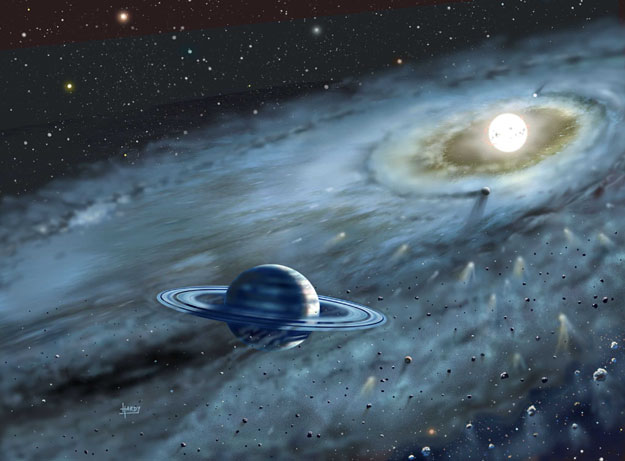Explanation: One of the brightest stars on the sky likely has planets. Fomalhaut, actually the 17th brightest star in the night sky, is a mere 22 light-years away but only a fraction of the age of our Sun. Recent observations in far infrared light with a detector cooled to near zero kelvins indicate a dust disk surrounding Fomalhaut that has both a hole in the center and a warped edge. Now the hole in the center indicates that dust has fallen onto interior planets -- possibly like the Earth -- while the warp at the edge indicates the gravitational pull of a planet like Jupiter or Saturn. The discovery image was taken with the SCUBA instrument through the James Clerk Maxwell Telescope in Hawaii, USA. The above illustration shows what the Fomalhaut dusty planetary system might look like from near the large planet.
1999 2000 2001 2002 2003 2004 2005 2006 2007 2008 2009 2010 2011 2012 2013 2014 2015 2016 2017 2018 2019 2020 2021 2022 2023 2024 2025 |
Январь Февраль Март Апрель Май Июнь Июль Август Сентябрь Октябрь Ноябрь Декабрь |
NASA Web Site Statements, Warnings, and Disclaimers
NASA Official: Jay Norris. Specific rights apply.
A service of: LHEA at NASA / GSFC
& Michigan Tech. U.
|
Публикации с ключевыми словами:
Fomalhaut - extrasolar planet - экзопланета - Фомальгаут
Публикации со словами: Fomalhaut - extrasolar planet - экзопланета - Фомальгаут | |
См. также:
Все публикации на ту же тему >> | |
